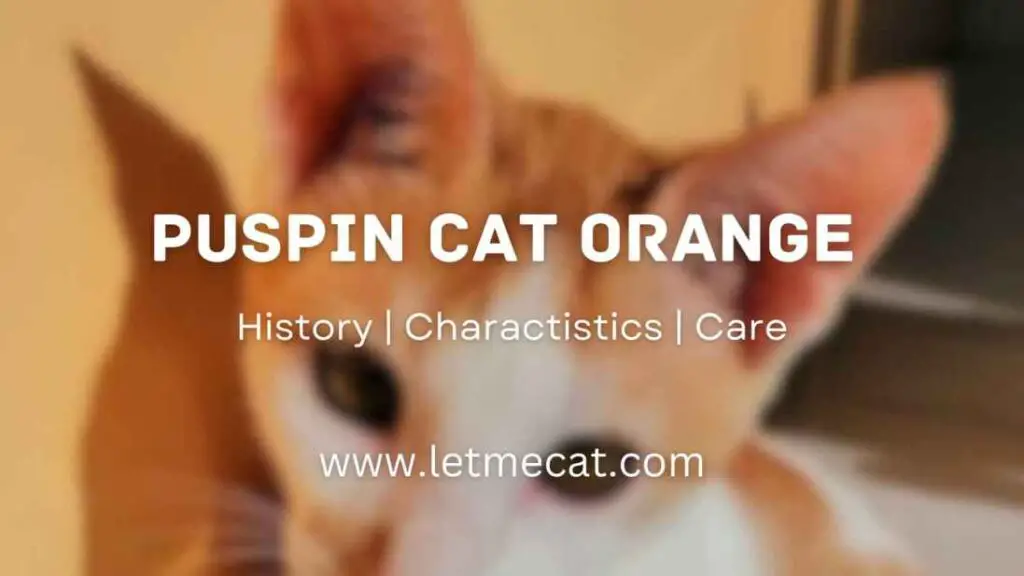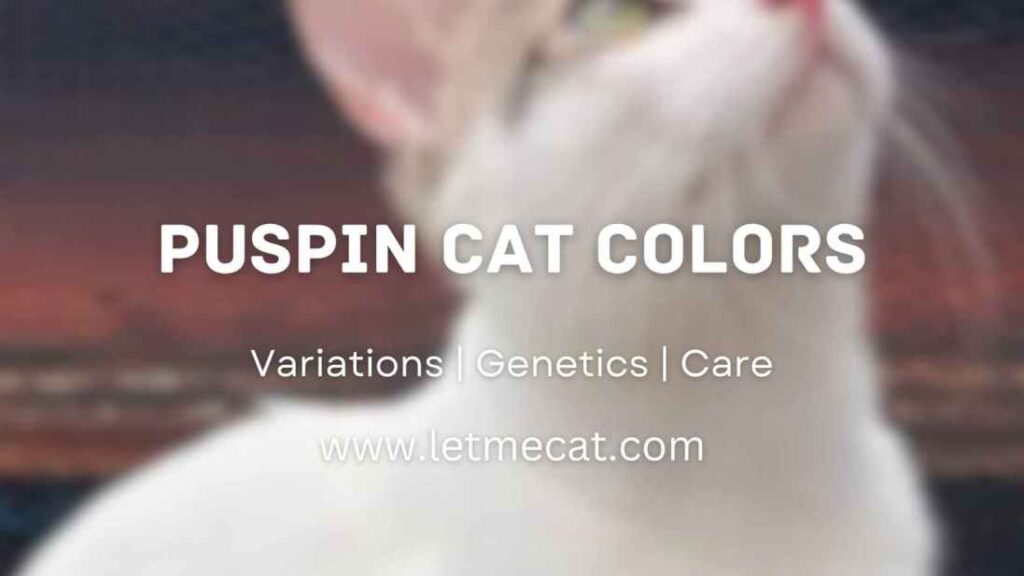In this article, we will explore the fascinating world of orange Puspin cats, their characteristics, care requirements, and the joy they bring to their owners’ lives.
1. Origins and History of Puspin Cats
Puspin cats are native to the Philippines and have been an integral part of the country’s culture for centuries. They are considered the indigenous cats of the Philippines, tracing their roots back to the early migration of cats to the archipelago. Puspin cats have thrived in the local environment, adapting to the diverse landscapes and climates across the islands.
2. The Splendor of Orange Puspin Cats
Orange Puspin cats captivate the hearts of many with their stunning coat color. The vibrant shades of orange range from deep amber to bright tangerine, creating a beautiful contrast against their fur. These felines are truly a sight to behold and are often admired for their unique and eye-catching appearance.
3. Physical Features and Coat Color
Orange Puspin cats exhibit various physical features that contribute to their charm. They have medium-sized body with a muscular build, allowing them to be agile and active. Their coats are short to medium in length, providing an easy-to-maintain grooming routine.
The distinct orange color of their fur is a result of genetic variations. Some orange Puspin cats may have solid-colored coats, while others may display tabby patterns with stripes or spots. Each cat is unique, showcasing a remarkable blend of colors and patterns.
4. Personality Traits and Temperament
Orange Puspin cats are known for their friendly and affectionate nature. They tend to form strong bonds with their human companions and enjoy spending quality time with them. These cats are often described as playful, curious, and intelligent, making them delightful companions for individuals or families.
Their sociable nature allows them to adapt well to various living environments, whether it be a small apartment or a spacious house. Orange Puspin cats are also known for their adaptability, making them suitable for both indoor and outdoor living.
5. Caring for Your Orange Puspin Cat
To ensure the well-being of your orange Puspin cat, it’s important to provide them with proper care and attention. Here are some key aspects of caring for your feline friend:
Nutrition and Diet
Maintaining a balanced diet is crucial for the health and vitality of your orange Puspin cat. Provide them with high-quality cat food that meets their nutritional requirements. Consult with your veterinarian to determine the appropriate portion sizes and feeding schedule.
Grooming and Hygiene
Regular grooming sessions help keep your orange Puspin cat’s coat healthy and free from mats or tangles. Brush their fur gently to remove loose hair and prevent the formation of hairballs. Additionally, ensure their dental hygiene by regularly brushing their teeth and scheduling professional dental cleanings if needed.
Exercise and Playtime
Orange Puspin cats are active by nature and require regular exercise to stay fit and mentally stimulated. Engage them in interactive play sessions using toys or provide them with scratching posts to satisfy their natural instincts.
Health and Veterinary Care
Routine veterinary check-ups are essential to monitor your orange Puspin cat’s overall health. Vaccinations, deworming, and preventive treatments for fleas and ticks should be administered as recommended by your veterinarian. Keep an eye out for any unusual behaviors or signs of illness and seek immediate veterinary attention if needed.
6. Training and Socialization
Training your orange Puspin cat can enhance their behavior and strengthen the bond between you. Positive reinforcement techniques, such as treats and praise, can be used to teach them basic commands and encourage good manners. Socialization is equally important to ensure they feel comfortable around other animals and people.
7. Interacting with Orange Puspin Cats
Orange Puspin cats are known for their affectionate nature and enjoy being in the company of their human companions. They appreciate gentle petting and cuddling, but always observe their body language to ensure they are comfortable and receptive to interaction. Engage in interactive play sessions to further strengthen your bond.
8. Creating a Safe and Stimulating Environment
Designing a safe and enriching environment for your orange Puspin cat is vital for their well-being. Provide them with scratching posts, climbing structures, and interactive toys to keep them entertained. Ensure that your home is free from hazards and secure windows and balconies to prevent accidents.
9. Adopting an Orange Puspin Cat: Where to Find Them
If you are interested in adopting an orange Puspin cat, consider visiting local animal shelters or rescue organizations. These establishments often have a variety of cats available for adoption, including Puspin cats with different coat colors. By adopting, you provide a loving home to a cat in need.
10. The Joy of Owning an Orange Puspin Cat
Owning an orange Puspin cat is a rewarding experience. Their playful antics, loving nature, and striking appearance bring joy and happiness to their owners’ lives. The unique bond formed with these feline companions is truly special and can provide a lifetime of cherished memories.
Conclusion
Puspin cat orange are delightful companions that bring a splash of color into our lives. With their vibrant coats and affectionate nature, they have a special place in the hearts of cat lovers. By providing them with proper care, attention, and a loving home, you can experience the joy and companionship that these charming feline friends offer. Thank you for reading.




Pingback: Puspin Tabby Cat: Personality, Health, Nutrition - Let Me Cat
Pingback: White Puspin Cat: Origin, Health, Training, Grooming - Let Me Cat
Pingback: Himalayan X Puspin: Personality, Grooming, Health - Let Me Cat